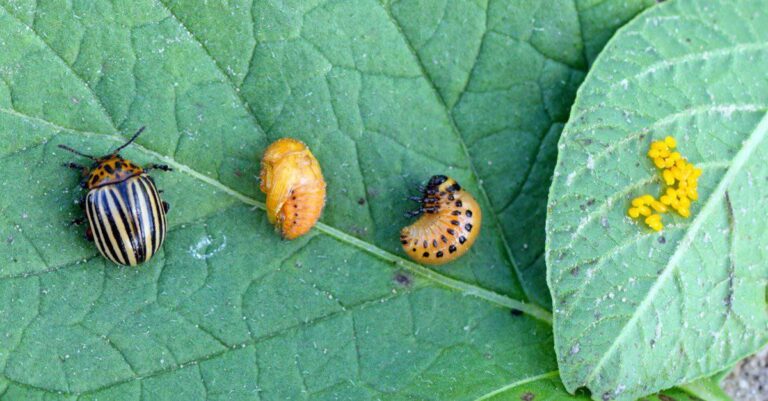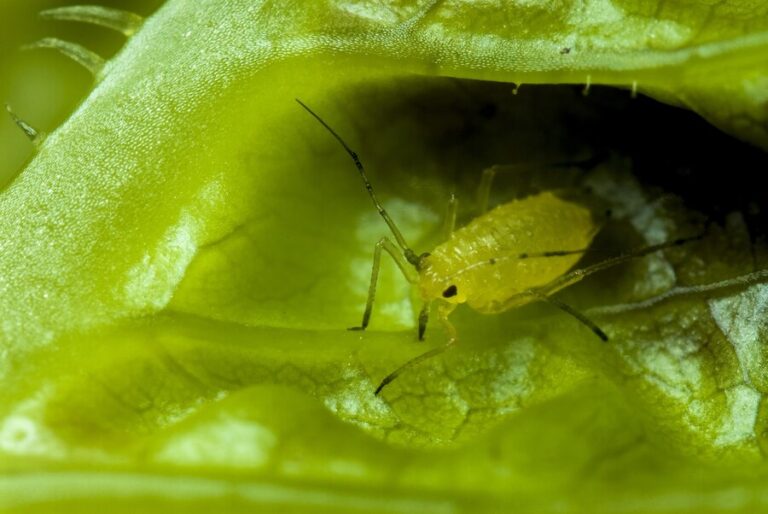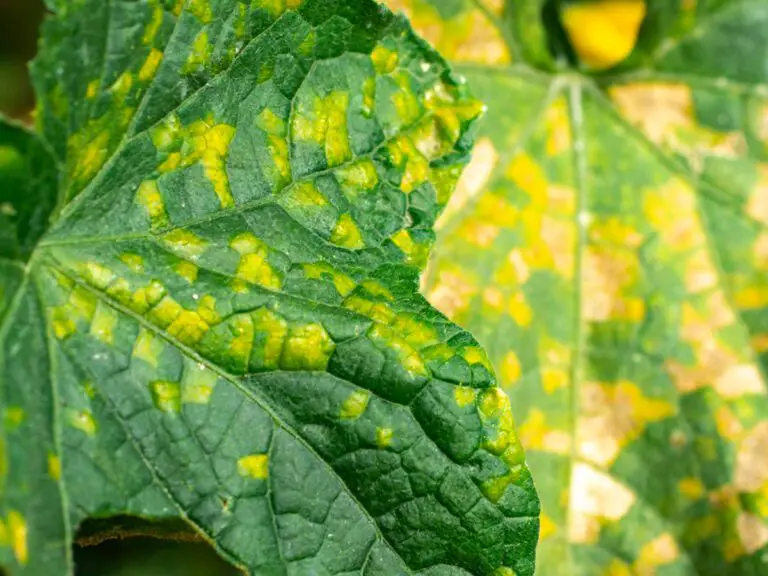How to Get Rid of Fungus Gnats Once and For All
Table of Contents
Identifying Fungus Gnats
Fungus gnats are small, flying insects that are commonly found in homes, greenhouses, and indoor gardens. These pests are not only a nuisance, but can also cause damage to your plants. Identifying fungus gnats is crucial to effectively deal with the infestation.
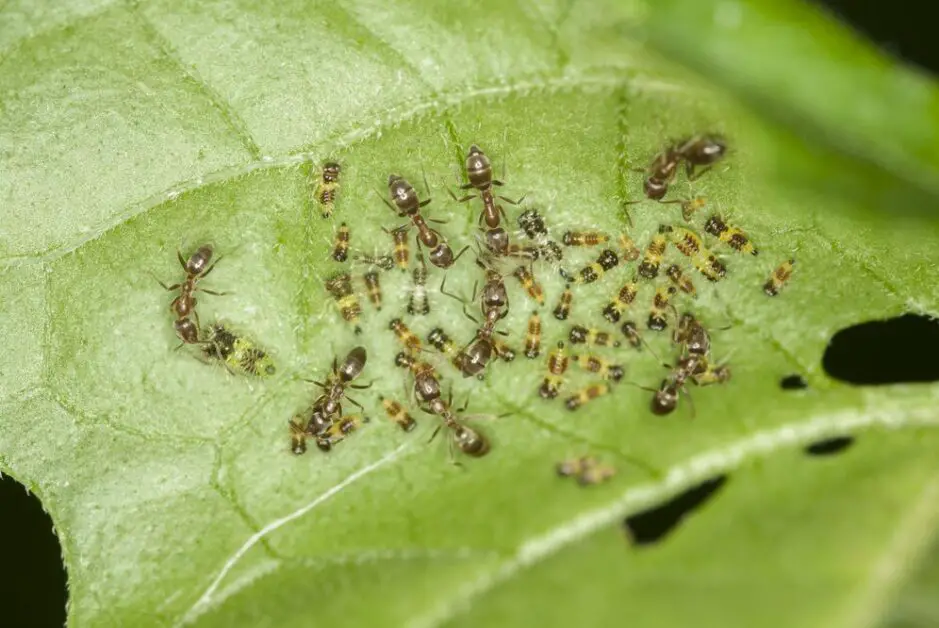
One of the key characteristics of fungus gnats is their size. Adult fungus gnats are typically small, measuring around 1/16 to 1/8 of an inch in length. They have slender bodies and long, delicate legs. Their color can vary, but they are usually black or dark grey.
Another distinctive feature of fungus gnats is their behavior. These pests are attracted to moist environments, particularly those with organic matter such as soil or decaying plants. Fungus gnats are often seen hovering around potted plants, where they lay their eggs in the soil. The larvae, which are legless and white, feed on the organic matter in the soil and can cause root damage to your plants.
In order to accurately identify fungus gnats, it is important to carefully observe their physical characteristics and behavior. Once you have confirmed the presence of fungus gnats, you can then take appropriate measures to control and eliminate these pests.
Lifecycle of Fungus Gnats
Fungus gnats, scientifically known as Sciaridae, are small, dark-colored insects that belong to the Diptera order. These pests are commonly found in moist environments, such as houseplants, gardens, and greenhouses. Understanding the lifecycle of fungus gnats is crucial for effectively dealing with infestations.
The lifecycle of a fungus gnat consists of four stages: egg, larva, pupa, and adult. The adult females lay their eggs in the top layers of damp soil or organic matter. These eggs hatch into larvae, which are the most destructive stage of the gnat’s lifecycle. The larvae feed on decaying organic matter and plant roots, causing damage and weakening the plants. As the larvae grow, they molt several times before entering the pupal stage. During the pupal stage, the larvae undergo metamorphosis and transform into adult gnats. Finally, the adult gnats emerge from the pupae and begin the cycle again by laying eggs.
It is important to note that fungus gnats have a short lifecycle, typically lasting around three to four weeks. However, under optimal conditions, their lifespan can be as short as seven days. Understanding this lifecycle helps gardeners and plant enthusiasts implement strategies to disrupt the gnat’s reproduction and reduce the population. By targeting the specific stages of the lifecycle, it becomes possible to break the cycle and effectively eliminate fungus gnat infestations.
Understanding the Attractants for Fungus Gnats
Fungus gnats are attracted to a variety of elements that can be found in our homes and gardens. Understanding these attractants is crucial in effectively combating these pesky insects.
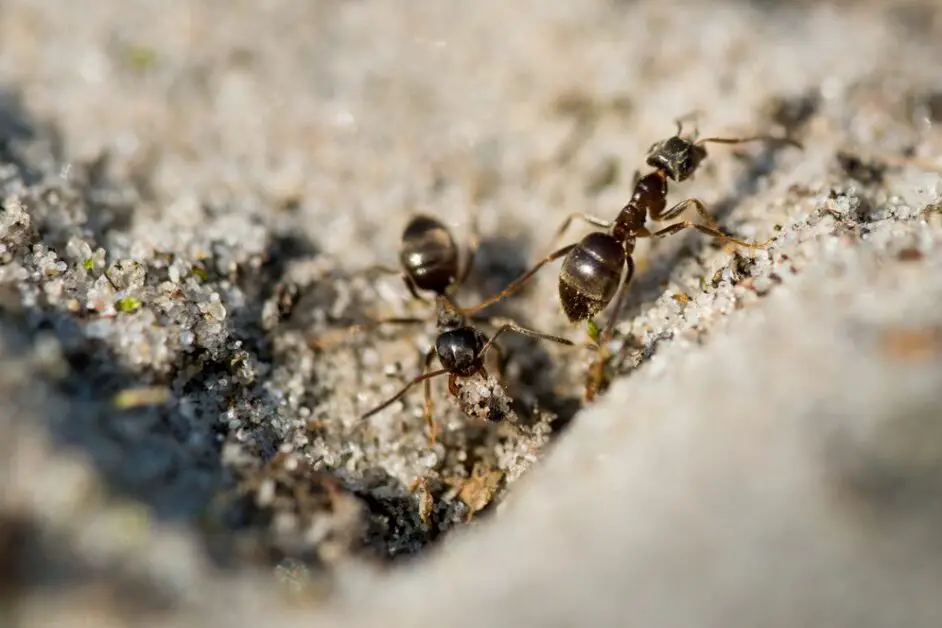
First and foremost, fungus gnats are drawn to environments with excessive moisture. This includes not only damp soil, but also areas of high humidity. The moist conditions provide the perfect breeding ground for fungus gnats, allowing them to reproduce rapidly. Therefore, it is essential to eliminate excess moisture in your home and maintain proper levels of humidity to discourage these insects from taking residence.
Additionally, fungus gnats are strongly attracted to organic matter. This includes decaying plant material, organic fertilizers, and even the tiny algae that can form on the surface of soil. These gnats feed on the rich organic matter, making it important to keep your garden and potted plants free from debris and decaying material. Regularly removing dead leaves, rotting fruit, and other organic substances can help reduce the likelihood of attracting fungus gnats.
By understanding these attractants, we can take proactive measures to prevent and control fungus gnat infestations. By eliminating excess moisture and ensuring a clean and well-maintained environment, we can significantly reduce the attractiveness of our homes and gardens to these bothersome pests.
Eliminating Excess Moisture in Your Home
Excess moisture in your home can create the perfect breeding ground for fungus gnats. These tiny pests thrive in damp environments, making it essential to eliminate any sources of moisture to prevent infestations.
One effective way to reduce moisture is by ensuring proper ventilation in your home. Opening windows and using fans can help improve air circulation, which in turn reduces humidity levels. Additionally, consider using dehumidifiers in areas prone to moisture buildup, such as basements or bathrooms. These devices remove excess moisture from the air, making it less hospitable for fungus gnats.
Another important step in eliminating excess moisture is to repair any leaks or plumbing issues in your home. Leaky pipes or faucets can create moist environments that attract fungus gnats. Regularly inspect your plumbing system and promptly address any leaks to maintain a dry environment.
By taking these measures to eliminate excess moisture in your home, you can significantly reduce the risk of fungus gnat infestations. Remember, prevention is key when it comes to managing these pests, and maintaining a dry environment is an important step towards achieving a healthy and pest-free home.
Inspecting and Treating Potted Plants for Fungus Gnats
Inspecting and treating potted plants for fungus gnats is an essential step in controlling and preventing infestations. These tiny insects may seem harmless, but they can cause significant damage to your plants if left unchecked. Begin by inspecting the soil surface for small black flies or larvae crawling around. Fungus gnats thrive in moist environments, so pay close attention to plants that have been overwatered or have poor drainage.
Following the steps in using inspecting and treating potted plants for fungus gnats:
| Action | Details | |
| 1. | Visual Inspection | Examine the soil surface for adult fungus gnats. |
| 2. | Sticky Traps | Place yellow sticky traps near the plants to catch adults. |
| 3. | Soil Moisture Control | Avoid overwatering; let the top inch of soil dry between watering. |
| 4. | Beneficial Nematodes | Apply beneficial nematodes to the soil to control larvae. |
| 5. | Neem Oil | Mix neem oil with water and apply to the soil surface. |
| 6. | Bacillus thuringiensis (BT) | Use BT as a soil drench to target fungus gnat larvae. |
| 7. | Hydrogen Peroxide | Dilute hydrogen peroxide and water mixture for soil treatment. |
| 8. | Cinnamon Powder | Sprinkle cinnamon on the soil to deter adult fungus gnats. |
| 9. | Quarantine Infested Plants | Isolate infected plants to prevent the spread of fungus gnats. |
Once you have identified a fungus gnat infestation, it is crucial to take immediate action to prevent further damage. Start by allowing the soil to dry out between watering sessions, as this will discourage the growth of the fungus that fungus gnats feed on. Additionally, consider using yellow sticky traps to catch adult gnats in the vicinity of your potted plants. These traps can help reduce the population and serve as an early warning system for new infestations.
Using Natural Predators to Control Fungus Gnats
Natural predators can be a highly effective method for controlling fungus gnats in your garden. These predators, such as beneficial nematodes and predatory mites, feed on the larvae and pupae of fungus gnats, effectively reducing their population. Beneficial nematodes, microscopic roundworms that are commercially available, can be applied to the soil where the fungus gnat larvae are present. These nematodes will seek out the larvae and infect them with a bacteria, ultimately killing them. Predatory mites, on the other hand, are tiny insects that actively hunt and feed on fungus gnat larvae and pupae. Introducing these natural predators into your garden can provide a sustainable and eco-friendly solution to your fungus gnat problem.
It is important to note that the success of using natural predators to control fungus gnats depends on various factors, such as the species of fungus gnats and the environmental conditions of your garden. Therefore, it is essential to properly identify the type of fungus gnat infestation you have before implementing this method. Additionally, it may take some time for the natural predators to establish in your garden and achieve effective control. However, once established, these natural predators can provide long-term control and help prevent future infestations. Consider incorporating natural predators as part of an integrated pest management approach to effectively manage fungus gnats in your garden.
Applying Neem Oil to Get Rid of Fungus Gnats
Neem oil, derived from the seeds of the neem tree, is a powerful natural remedy for getting rid of fungus gnats. Its insecticidal properties make it an effective solution for controlling these pesky pests in your garden or indoor plants. Neem oil contains azadirachtin, a compound that disrupts the feeding and reproductive systems of fungus gnats, ultimately leading to their demise.
To apply neem oil, mix it with water according to the manufacturer’s instructions and pour it into a spray bottle. Make sure to cover both the top and bottom surfaces of the leaves, as well as the soil, as fungus gnats are known to lay their eggs in moist soil. Repeat the application every 7-10 days until the infestation is eradicated.
It’s important to note that neem oil is most effective when used as a preventive measure or at the first sign of an infestation. For severe cases, you may need to combine neem oil treatment with other control methods to achieve optimal results. Remember to always follow the instructions on the product label and take proper precautions when handling and applying neem oil.
Using Hydrogen Peroxide as a Soil Drench
Hydrogen peroxide can be an effective tool in combating fungus gnats when used as a soil drench. Fungus gnats thrive in damp environments, laying eggs in the moist soil where larvae later emerge and feed on plant roots. By applying hydrogen peroxide as a soil treatment, you can disrupt their life cycle and reduce their numbers.
The oxygenating properties of hydrogen peroxide help to kill off fungus gnat larvae and inhibit their growth. When applied as a soil drench, hydrogen peroxide releases oxygen molecules into the soil, creating an oxygen-rich environment that is detrimental to the larvae. Additionally, hydrogen peroxide can help to break down organic matter, such as decaying plant material, that serves as a breeding ground for fungus gnats. However, it is important to note that hydrogen peroxide should be used with caution, as excessive use can harm beneficial microorganisms in the soil. It is advisable to consult with a gardening professional or conduct thorough research before implementing this method.
• Hydrogen peroxide can be used as a soil drench to combat fungus gnats.
• Fungus gnats lay eggs in moist soil, where larvae feed on plant roots.
• Applying hydrogen peroxide disrupts the life cycle of fungus gnats and reduces their numbers.
• The oxygenating properties of hydrogen peroxide kill off fungus gnat larvae and inhibit their growth.
• When used as a soil drench, hydrogen peroxide releases oxygen molecules into the soil, creating an environment that is harmful to the larvae.
• Hydrogen peroxide also helps break down organic matter that serves as a breeding ground for fungus gnats.
• Excessive use of hydrogen peroxide can harm beneficial microorganisms in the soil, so caution should be exercised when using it.
• Consultation with a gardening professional or thorough research is recommended before implementing this method.
Implementing Sticky Traps to Catch Fungus Gnats
Sticky traps are a highly effective method for catching fungus gnats and preventing them from multiplying. These traps work by attracting the adult gnats with their yellow color and sticky surface, causing them to become trapped upon contact. Once trapped, the gnats are unable to escape and eventually die. Implementing sticky traps is a simple yet powerful solution for controlling fungus gnat populations.
When using sticky traps, it’s important to strategically place them in areas where fungus gnats are commonly found. This includes near plants, windowsills, and other areas where adult gnats are frequently seen. By placing the traps in these key locations, you can maximize their effectiveness in catching the gnats and reducing their numbers.
Sticky traps offer a non-toxic and eco-friendly approach to fungus gnat control, making them suitable for use in both indoor and outdoor settings. With regular monitoring and replacement, these traps can be an essential tool in your arsenal against the pesky fungus gnats. So, if you’re dealing with an infestation, consider implementing sticky traps as part of your integrated pest management strategy.
Creating a Homemade Vinegar Trap for Fungus Gnats
To effectively combat fungus gnats in your home or garden, creating a homemade vinegar trap can be a simple yet effective solution. Vinegar is known for its ability to attract and trap these pesky insects, making it an ideal ingredient for an efficient homemade trap.
To make your own vinegar trap, you’ll need a few basic materials: a shallow dish or bowl, apple cider vinegar, a few drops of dish soap, and plastic wrap. Begin by pouring a small amount of apple cider vinegar into the dish – just enough to cover the bottom. Add a few drops of dish soap and gently mix it with the vinegar. This helps break the surface tension, ensuring that when the fungus gnats come into contact with the solution, they will sink and drown instead of landing on the surface and flying away.
Lastly, cover the dish tightly with plastic wrap, securing it with a rubber band or tape. Use a toothpick or fork to poke several small holes in the plastic wrap, creating entry points for the fungus gnats.
Now that your homemade vinegar trap is ready, place it near the area where the fungus gnats are most active. These traps can be particularly effective when strategically placed around potted plants, where the fungus gnats often lay their eggs. The gnats will be lured by the sweet scent of the apple cider vinegar and will enter the trap through the small holes in the plastic wrap. Once inside, they will be unable to escape and eventually drown in the vinegar solution. Remember to periodically check your trap, empty it, and replenish the vinegar and dish soap as needed.
Repelling Fungus Gnats with Essential Oils
Fungus gnats can be a nuisance for any gardener, but fortunately, there are natural solutions available to repel them. One effective method is the use of essential oils. Essential oils derived from certain plants have been found to have repellent properties that can deter these pesky insects.
One popular essential oil option is neem oil. Neem oil is derived from the seeds of the neem tree and has long been used as a natural insect repellent. Its strong scent confuses and repels fungus gnats, preventing them from infesting your plants. To use neem oil, simply dilute it according to the instructions on the product label and apply it to the soil or foliage of the affected plants. Repeat this process every one to two weeks for best results.
Another essential oil that can be effective against fungus gnats is peppermint oil. Peppermint oil has a strong, minty aroma that repels these insects. You can create a homemade spray by mixing a few drops of peppermint oil with water and spraying it onto the affected plants. As an added bonus, peppermint oil also has antifungal properties that can help control any fungal growth that may be attracting the gnats.
Remember, essential oils are a natural alternative to chemical insecticides, but it’s important to use them properly. Always follow the instructions on the product label and conduct a patch test on a small area of your plants before applying the oils more broadly. Additionally, keep in mind that essential oils may have different effects on different plant species, so it’s important to research the specific needs and tolerances of your plants before using essential oils as a repellent.
Preventing Future Infestations of Fungus Gnats
To prevent future infestations of fungus gnats, it is crucial to implement a few key practices in your gardening routine. First and foremost, ensure that you are using high-quality, well-draining soil. Fungus gnats thrive in damp environments, so opting for soil that allows for proper drainage will reduce their breeding grounds significantly. Additionally, consider using sterilized potting soil to further minimize the chances of introducing fungus gnats into your plants.
Furthermore, overwatering your plants is a common mistake that promotes fungus gnat infestations. To prevent this, water your plants only when the top inch of soil feels dry to the touch. By allowing the soil to slightly dry out between waterings, you can discourage the growth of fungus gnats and promote healthy plant growth. It is also advisable to avoid using saucers under pots, as they can accumulate excess water and create a favorable environment for these pests.
Lastly, practicing good hygiene in your garden is essential for preventing future fungus gnat infestations. Regularly inspect your plants for any signs of fungus gnats, such as tiny black flies or larvae in the soil, and take prompt action if necessary. Additionally, remove any decaying organic matter, such as fallen leaves or old mulch, as they can attract fungus gnats. By incorporating these preventative measures into your gardening routine, you can address the issue of fungus gnat infestations and maintain a healthy and thriving garden environment.
Maintaining Proper Plant Care to Avoid Fungus Gnats
Proper plant care is essential for preventing fungus gnat infestations. By following a few key practices, you can create an environment that is inhospitable to these pesky pests. First and foremost, it is important to maintain proper watering techniques. Overwatering can lead to excessive moisture in the soil, which is the perfect breeding ground for fungus gnats. Be sure to allow the top layer of soil to dry out between waterings, as this will discourage the gnats from laying their eggs.
To know more about controlling Fungus Gnats on plants watch the video!
In addition to watering, it is crucial to regularly inspect your plants for any signs of fungus or decay. Fungus gnats are attracted to decaying organic matter, so removing any dead leaves or fallen debris will help to deter them. Furthermore, it is advisable to avoid over-fertilizing your plants, as excessive nutrients can create a habitat that is favorable to these insects. Stick to the recommended fertilization schedule and avoid using organic fertilizers that contain materials such as peat moss, which can attract fungus gnats. By implementing these plant care practices, you can significantly reduce the risk of a fungus gnat infestation in your home or garden.
Seeking Professional Help for Severe Infestations
When it comes to severe infestations of fungus gnats, seeking professional help may be the most effective solution. While there are various DIY methods available for controlling these pests, a professional technician can provide specialized expertise and treatment options that ensure lasting results.
Professional help is particularly recommended when home remedies and preventive measures have proven ineffective or when the infestation has become widespread and difficult to manage. A qualified pest control expert will have in-depth knowledge of fungus gnats, their behavior, and the most appropriate treatment methods for specific situations. They can conduct a thorough inspection of your home or garden, identify the extent of the infestation, and develop a tailored action plan to eradicate the pests.
Additionally, professional help can save you time and frustration by taking the guesswork out of managing severe fungus gnat infestations. These experts have access to professional-grade products and equipment that may not be readily available to the average homeowner. By relying on their expertise, you can have peace of mind knowing that the infestation will be effectively addressed, helping you restore a healthy and pest-free environment for your plants. Remember, seeking professional help is a proactive step towards preventing future infestations and maintaining a thriving garden.
What are some signs of a severe infestation of fungus gnats?
Signs of a severe infestation of fungus gnats include the presence of numerous adult gnats flying around the house, an overwhelming number of larvae in the soil of potted plants, and damage to plant roots.
Can fungus gnats cause damage to plants?
Yes, fungus gnats can cause damage to plants. The larvae feed on plant roots, which can lead to stunted growth, yellowing leaves, and overall weakening of the plant.
Are there any natural predators that can help control fungus gnat populations?
Yes, there are natural predators that can help control fungus gnat populations. Some examples include predatory mites, nematodes, and certain species of rove beetles.
How does neem oil help get rid of fungus gnats?
Neem oil acts as a natural insecticide and disrupts the life cycle of fungus gnats. It can be applied to the soil to kill the larvae and discourage adult gnats from laying eggs.
Is hydrogen peroxide an effective treatment for fungus gnats?
Yes, hydrogen peroxide can be used as a soil drench to control fungus gnats. It kills the larvae by depriving them of oxygen and also helps to eliminate excess moisture in the soil.
How do sticky traps work in catching fungus gnats?
Sticky traps are coated with a sticky adhesive that attracts and traps adult fungus gnats. When the gnats come into contact with the trap, they become stuck and are unable to escape.
Can vinegar traps be effective in catching fungus gnats?
Yes, vinegar traps can be effective in catching fungus gnats. The scent of vinegar attracts the adult gnats, and they get trapped in the liquid when they land on the trap.
Do essential oils repel fungus gnats?
Yes, certain essential oils can repel fungus gnats. Oils like lavender, peppermint, and citronella can be used to create a natural repellent that discourages gnats from infesting plants.
How can proper plant care help prevent future infestations of fungus gnats?
Proper plant care, such as avoiding overwatering, using well-draining soil, and regularly inspecting plants for signs of infestation, can help prevent future infestations of fungus gnats.
When should I seek professional help for severe fungus gnat infestations?
It is recommended to seek professional help for severe fungus gnat infestations when home remedies and DIY methods have not been successful in controlling the infestation. A professional pest control specialist can assess the situation and provide targeted treatment options.

